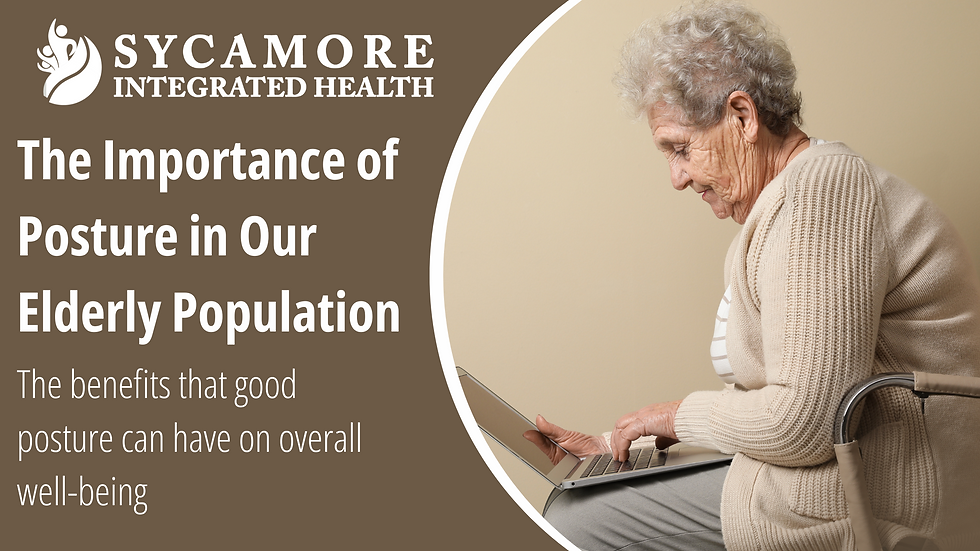How Grip Strength Can Be A Good Indicator of Health
- Sycamore Integrated Health

- Sep 7, 2022
- 2 min read
Updated: Dec 12, 2024

Time and time again we hear about the importance of grip strength and how it can be used to determine our overall health and well-being. It seems like the message is being played over and over like a broken record. My goal today is to bring to light the facts. Delving into the research, I hope to inform all those reading what, if anything, can come from having your grip strength assessed.
Definition:
Grip strength: Involves measuring your hand strength and works well to the muscle health of your hands and forearms.
How is it measured?
Grip strength is often measured in units such as pounds, kilograms, or Newtons by squeezing a type of muscle strength testing equipment, known as a dynamometer (Add a picture)
Each hand is measured three times and an average number is derived.
The average healthy grip strength for men and women varies. Moreover, age is also a variable that is considered when assessing an individual’s grip strength.
Luckily, there is a chart available to determine how your grip strength compares to the “norms”, so you can determine if your grip strength is above average, average, or low.
Who is interested in my grip strength data?
Your primary care physician
Chiropractor
Physical Therapist
What does it mean if my scores are lower than I expected?
Should your score fall below this measurement, it could be an indicator of a variety of health issues.
However, grip strength tends to decrease as we age for a number of different reasons.
What does the research say about those with lower grip strength?
Limited mobility (Forrest et al 2018)
Getting up from a chair
Walking
Climbing stairs
Socialization/”going out”
Decreased bone density/osteoporosis (Kim SW et al 2012)
Heel bone (calcaneous)
Spine
Hip
Higher risk for fractures (Kim SW et al 2012)
Fragility of bones
Decreased muscle strength means less tendons pulling on bones keeping your skeletal structure strong
Predictor of cardiovascular mortality (Prasitsiriphon PW et al 2018)
Myocardial Infarction (Heart Attack)
Stroke
Higher risk for diabetes or pre-diabetes (Andersen H et al 2004, Hu S et al 2019)
Indicates greater sleep impairment (Pengpid S et al 2018)
Leading to decreased time for our body to heal and regenerate
Increased risk for hospitalization (Andreasen J et al 2018, Allard JP 2016)
Visits to ER
Increased length of stay
Higher risk of additional complications while in the hospital
Potential death while under hospital care
What should I do?
You can progress your grip strength by performing a variety of hand exercises.
This can be as simple as lifting weights in the gym, squeezing a tennis ball, carrying more objects both inside and outside the home, or using a shovel to improve your home's garden.
You can reach out to the professionals at Sycamore Integrated Health to schedule an evaluation.
Sycamore Integrated Health has a variety of rehab tools and systems which are tailor-made to improve your overall health.
In Conclusion:
Grip strength tends to increase as you work to better your overall health and well-being
Take control of your health by participating in physical therapy and exercise.
Begin by engaging in 10 minutes of exercise or other physical activity each day to improve your mobility, reduce disability, and promote a longer, higher quality life..




Comments